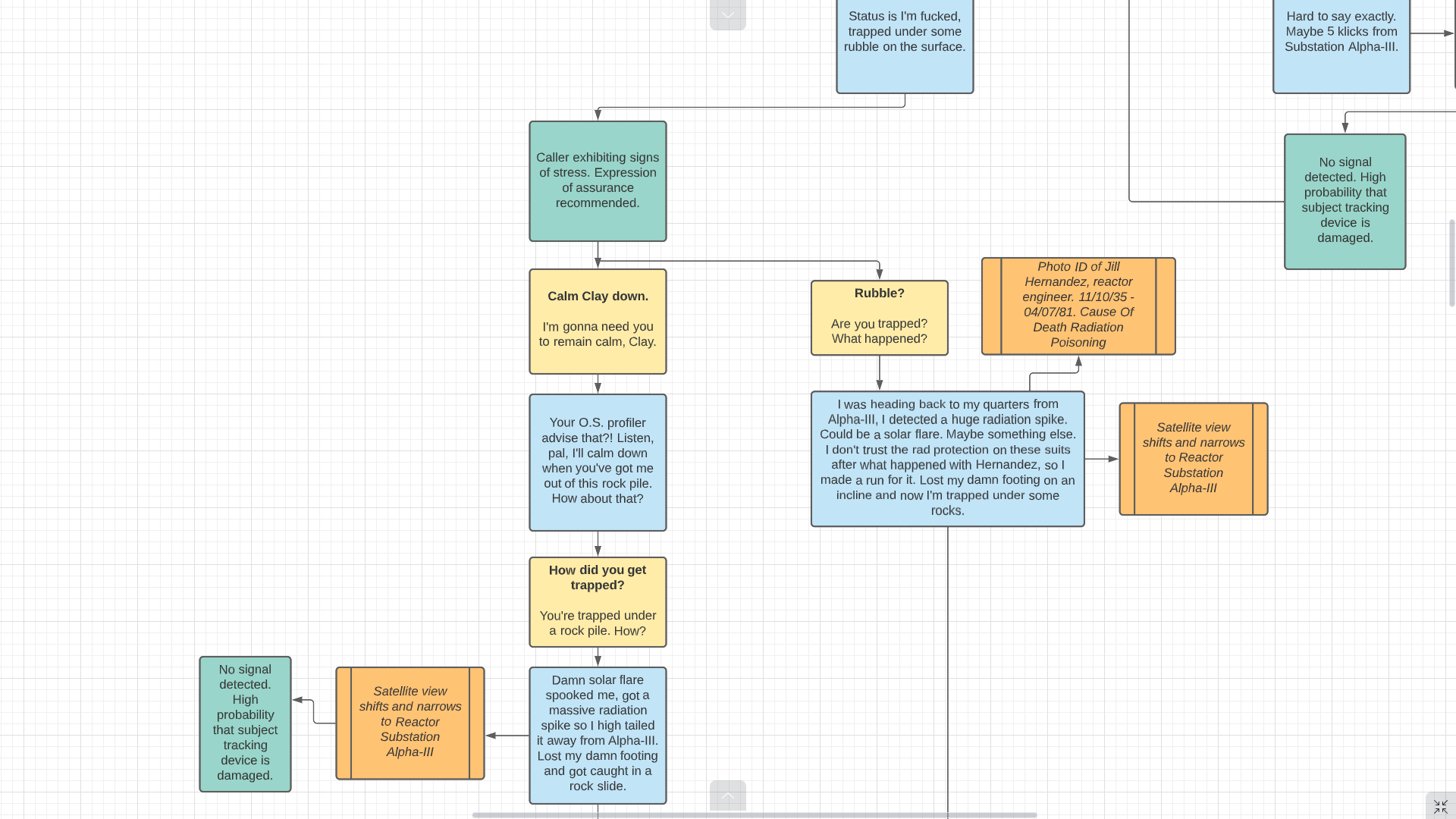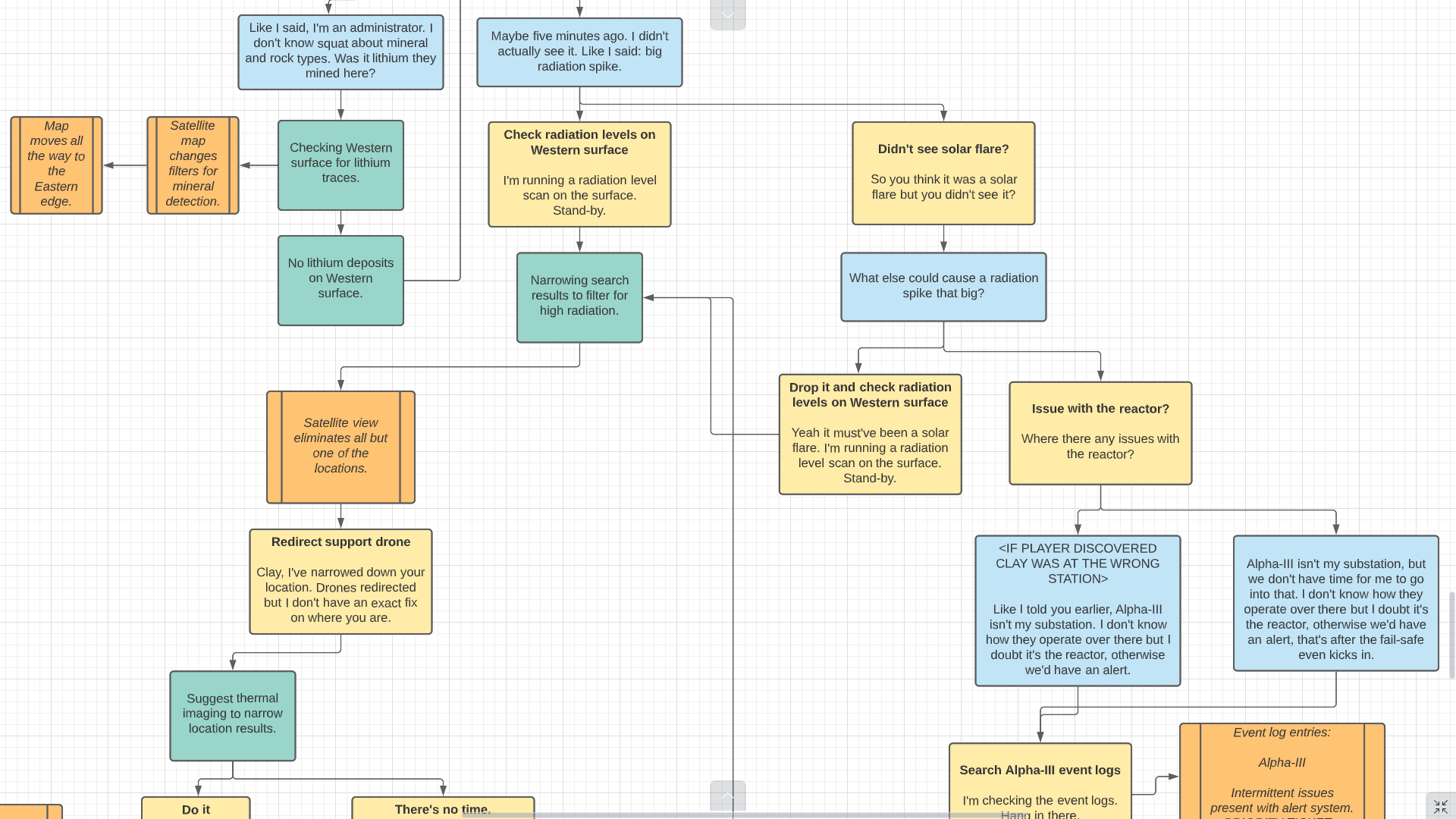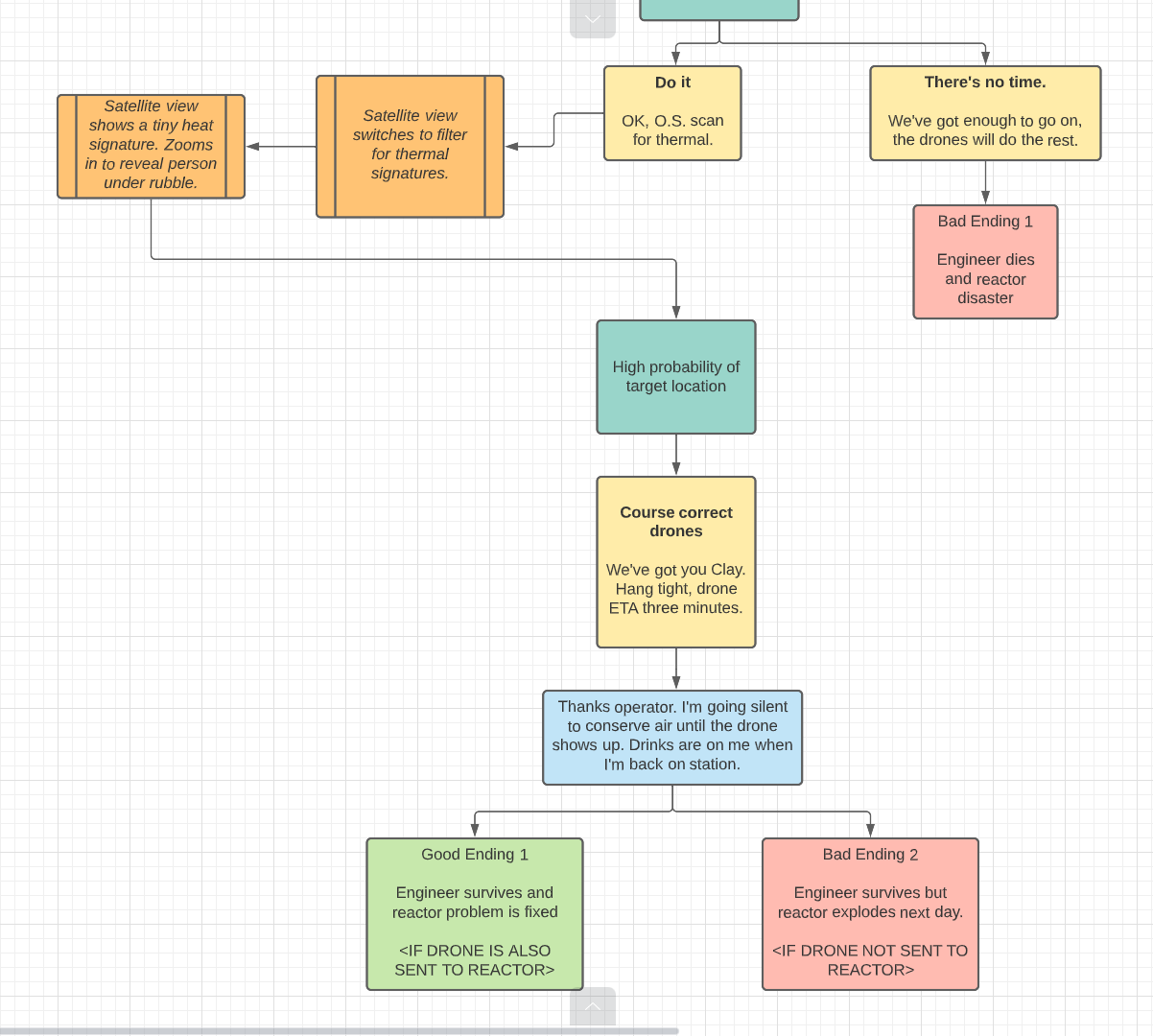Hero unit 2
summary
An emergency dispatch simulator set in a dystopian planetary colony with examples of:
- Worldbuilding
- Story Writing
- Branching Dialogue
project Overview
The general premise of the Hero Unit games is for the player to respond to incidents through a dispatch system to try and assist callers in an emergency situation by making the right dialogue choices. Hero Unit 2 is the follow-up to the original, with a science fiction twist, additional visual elements and an overarching mystery story that unfolds as we progress through the narrative.
Unfortunately, I was unable to finish my work on Hero Unit 2, as I went full-time on another project.
worldbuilding
My first task on Hero Unit 2 was to establish a setting that would give us ample scope for different types of calls that used the full potential of the Sci-Fi setting. It was important to Jassim (the Creative Director), that the characters and their situations be relatable in a contemporary context.
With this in mind, I established the idea of Caerus, a planet owned and operated by a mega-corporation Tasker Investment Group (or TIG for short).
The struggle between TIG’s exploitation of the planet and its workers would form the backbone of these situations, making the choices and outcomes feel more meaningful in a larger context (with outcomes from certain calls affecting the “world state”).
-
Caerus, a planet operated by the Tasker Investment Group (TIG). Named after the Greek god of luck and opportunity, Caerus is one of TIG’s few remaining human-operated production projects.
-
Initially settled on for its rich mineral deposits, conventional mining operations reached their limits, so operations were shifted to nuclear reactor power generation for the orbiting shopping mega station Bazaar.
-
H.U. essentially operate as consultants for corporations looking to outsource worker services. Hero Unit is a private organisation that operates as emergency response, wellness and counselling services and corporate compliance providers.
-
With the planet no longer posting a high enough profit margin, TIG has decided to instigate “core mining”, a process of deep mineral extraction that lasts 30-50 years but renders the planet uninhabitable. With “core mining” set to take place in the next year, the workers living on Caerus are gradually leaving and being reassigned.
Due to mandatory government regulation, all settled planets need to be covered by a worker service provider — in this case, Hero Unit. Also mandatory is a “Holistic Event Report”, an AI report generated from all Hero Unit calls. This report covers the worker attitudes, safety levels and profit fluctuations.
-
We are a new Hero Unit operator, brought in as last-minute sickness cover for the Western catchment of Caerus.
Or are we?
the story in more depth
I was continually developing our storyline as Jassim and I had conversations about the themes we wanted to explore and the elements we wanted to focus on.
In the end we decided to go with something quite experimental, with the assumed reality of what the player was experienced being called into question.
Here is the last draft of the story synopsis that I worked on before leaving the project.
branching dialogue / Quest design
Below are some examples of the different paths and responses to an emergency call. For context, we have received a call from a miner who is trapped somewhere on the planet. We need to ascertain where he is and the extent of his injuries.






call-in-progress sample video
This video is an early proof-of-concept of how the calls may be presented (we were exploring several different ways to present information).
post-call debrief sample video
When our calls conclude, we are taken to a “Post-Call Debrief”. These take place on the same screen and follow on directly from the call we just had.
In these Post-Calls, we speak directly with our “co-operator”, who offers their opinion on how the call went.
On a surface level, these Post-Calls would appear to function as a way of grading the player. However, as they continue through the game we subtly subvert these, using them to call into question what we’ve previously experienced (playing out as a larger, ambiguous mystery).
Note: The UI in the video below is different, as we were still iterating on the design at this point.
